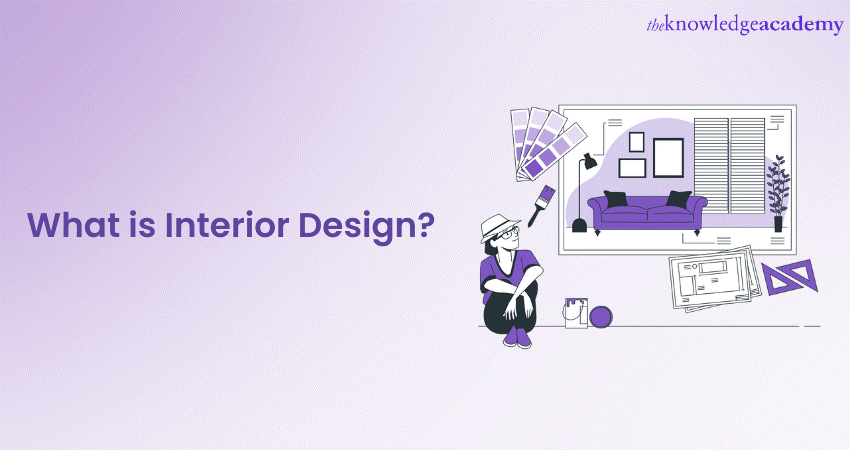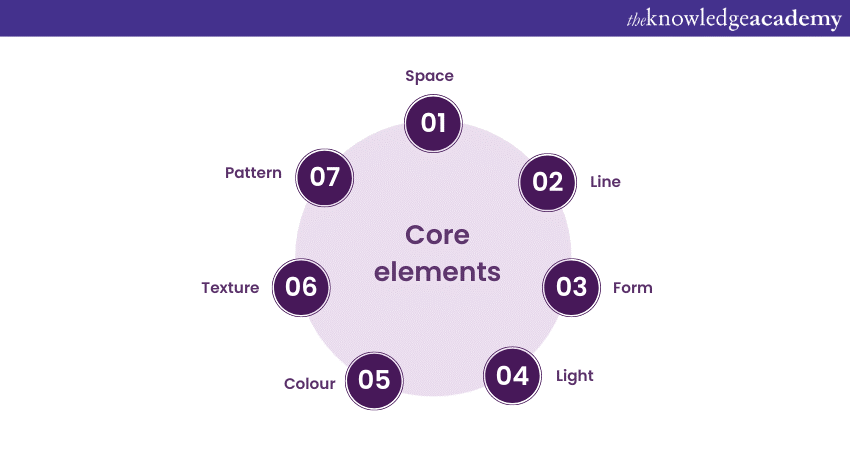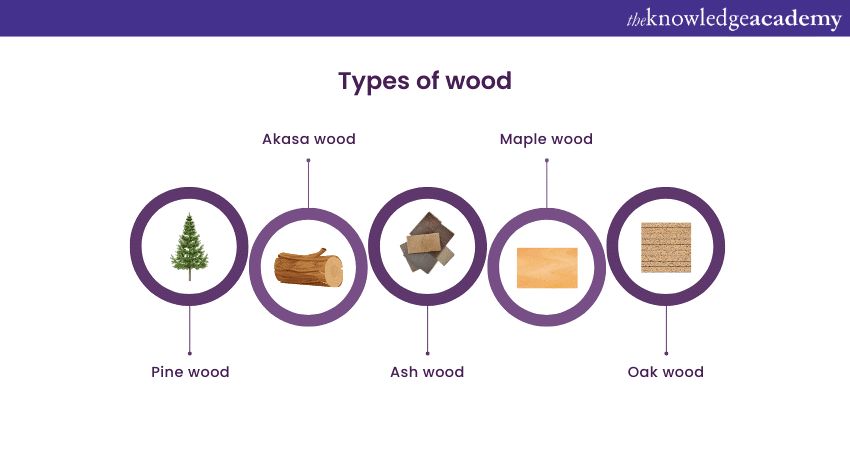We may not have the course you’re looking for. If you enquire or give us a call on 01344203999 and speak to our training experts, we may still be able to help with your training requirements.
Training Outcomes Within Your Budget!
We ensure quality, budget-alignment, and timely delivery by our expert instructors.

Common inquiries arise from individuals seeking insight into Interior Design: "What is Interior Design?" or "How do you define Interior Design?" This discipline melds creativity with pragmatism, enriching indoor spaces aesthetically and functionally. It encompasses a spectrum of tasks—from planning and research to coordination and execution—encompassing colour, lighting, furniture, materials, layout, and accessories.
This blog explores "What is Interior Design?" covering its fundamental principles, elements, styles, and contemporary trends. Additionally, we'll delve into the path to becoming an Interior Designer, the requisite skills, essential tools, and strategies for garnering inspiration and clientele. Explore what Interior Design is and how to navigate its practice effectively.
Table of Contents
1) Understanding What is Interior Design
2) Importance of Interior Design
3) Relationship between Interior Design and Architecture
4) Core elements of Interior Design
5) Modern trends in Interior Design
6) Future of Interior Design
7) Conclusion
Understanding What is Interior Design
Interior Design can be termed as transforming the interiors of spaces to make them visually appealing and functional. It is a combination of creativity and practicality to increase a room's aesthetics while assuring that it serves its intended purpose effectively.
Interior Designers decide on colours, materials, furniture, lighting, and layout to create harmonious and inviting environments. They seek to maximise the use of space, considering factors like traffic flow and comfort. Interior Designers also team up with clients to understand their preferences, needs and the atmosphere they want to create within the space.
Importance of Interior Design
The importance of Interior Design transcends mere visual appeal; it profoundly impacts our daily lives in multifaceted ways. Beyond aesthetics, Interior Design significantly influences how we interact with and perceive spaces, shaping our mood, productivity, and overall well-being.
Thoughtfully crafted interiors can streamline our routines, evoke specific emotions, and improve our mental health. Consider, for instance, the difference between a cluttered room inducing stress and a well-organised, airy space promoting relaxation and focus. Every design element, from the colours on the walls to the furniture arrangement, plays a pivotal role in hindering or enhancing our day-to-day experiences.
Recognising the importance of Interior Design is paramount for creating living and working environments that not only please the eye but also foster functionality and emotional well-being. By prioritising thoughtful design choices, we can cultivate spaces that support and enrich our lives on a fundamental level.
Relationship between Interior Design and Architecture
Interior Design and Architecture, though distinct, share a symbiotic relationship, collaboratively shaping our built environment. Architecture crafts the tangible framework, laying out the skeletal structure of a building, determining its exterior appeal, and setting spatial boundaries. On the other hand, Interior Design delves deeper into these spaces, tailoring them to human scales, preferences, and emotions.
Imagine Architecture as a canvas, vast and boundless. Interior Design then becomes the intricate brushwork, filling this canvas with details, colours, textures, and emotions. An Architect might envision grand archways, but it's the Interior Designer who decides how these archways feel to those walking beneath, considering factors like light, materials, and adjacent spaces.
Furthermore, as sustainable practices gain prominence, both fields increasingly intertwine, emphasising eco-friendly designs, materials, and energy efficiencies. The collaboration ensures captivating spaces aligned with our well-being, daily rhythms, and needs, transcending visual appeal. The following image will help you understand where they both overlap.
Master AutoCAD and elevate your skills – Join our AutoCAD Training now!
Core elements of Interior Design

Interior Design transcends mere decoration; it harmonises numerous core elements to ensure functionality, comfort, and aesthetics. Mastering these elements is key to designing spaces that resonate deeply with inhabitants. Let's have a look at these key elements in detail:
Space
a) Functionality: Every space should serve a defined purpose, whether for relaxation, work, or entertainment.
b) Flow: Efficient pathways and circulation are crucial to avoid obstructions and ensure ease of movement.
c) Proportions: A balanced space takes into consideration ceiling height, room size, and furnishings to avoid feelings of claustrophobia or emptiness.
Line
a) Coherence: Consistent use of lines, whether straight or curved, brings a sense of order to space.
b) Direction: Horizontal lines can expand space, vertical lines can give a sense of height, and dynamic lines add energy and movement.
c) Balance: A mix of different lines adds interest without overwhelming the eyes.
Form
a) Symmetry: Balanced forms create a sense of order and stability in a room.
b) Contrast: Mixing geometric and organic forms adds depth and intrigue.
c) Repetition: Using similar forms throughout a space can create a cohesive look.
Light
a) Layering: A combination of ambient, task, and accent lighting enhances functionality and mood.
b) Source: The balance between natural daylight and artificial light sources affects the room's ambience.
c) Intensity: The brightness and colour temperature can either energise or soothe inhabitants.
Colour
a) Palette selection: Colours should complement each other, often with a mix of primary, secondary, and accent hues.
b) Mood influence: Warm colours can evoke feelings of comfort and energy, while cool colours offer calmness and serenity.
c) Room size perception: Light colours can make a room feel bigger, while dark shades can create intimacy. Using Coastal Interior Design, you can make your room look bigger as this style uses light colours.
Texture
a) Tactile experience: Different textures, from rough to smooth, affect our tactile interaction with the space.
b) Depth creation: Layering textures, like a velvet couch with a silk pillow, adds depth and richness.
c) Visual warmth: Coarser textures can make a space feel warmer and more inviting.
Pattern
a) Scale and proportion: Larger patterns can dominate a space, while smaller motifs can act as subtle enhancers.
b) Relevance: Patterns should be relevant to the overall design theme, be it modern, traditional, or eclectic.
c) Balance: Using patterns requires a balance to avoid visual chaos, often by pairing them with solid colours.
With a deep understanding of these core elements, Interior Designers can craft environments that are not only visually stunning but also emotionally and functionally aligned with the users' needs.
Unlock your potential with our Interior Design Training today!
Modern trends in Interior Design
Modern trends reflect the broader shifts in society's values, technological advancements, and global influences. Adopting or adapting them allows homeowners and Designers to stay current, ensuring spaces remain both functional and visually compelling. Let's explore some prevailing trends that are reshaping interiors around the globe:
Sustainable designs
Modern trends offer sustainable designs that help reshape interiors in the following ways:
a) Eco-friendly materials: From bamboo flooring to recycled glass countertops, materials are chosen for their low environmental impact.
b) Energy efficiency: The Incorporation of solar panels, smart thermostats, and energy-efficient appliances is on the rise.
c) Biophilic Design: By Integrating nature into Interiors Designs, this trend focuses on improving occupants' well-being and connectivity to the environment.
Minimalistic interiors
Modern trends offer minimalistic interiors that help reshape interiors in the following ways:
a) Simplified spaces: A "less is more" approach, focusing on decluttered spaces and essential items only.
b) Neutral palettes: Light tones like beige, grey, and off-white dominate for a clean and timeless look.
c) Functional furniture: Multi-purpose pieces, like beds with storage or expandable dining tables, optimise space.
Digital integration
Modern trends offer digital integration that helps reshape interiors in the following ways:
a) Smart homes: Integration of AI devices, like smart speakers and automated lighting, makes homes more responsive.
b) Virtual Reality (VR): Used in the design process to visualise spaces before they're brought to life.
c) Augmented Reality (AR): AR apps allow clients to preview how furniture or decor items would look in their homes.
Texture and pattern play
Modern trends offer texture and pattern play that helps reshape interiors in the following ways:
a) Layered textures: Combining different materials, like velvet cushions on a leather sofa, adds depth and luxury.
b) Geometric patterns: From wallpaper to upholstery, bold geometric patterns make a statement.
c) Natural textures: Materials like jute, rattan, and wool celebrate their organic beauty.
The following image shows different types of wood that offer different textures and pattern play.

Dark and moody interiors
Modern trends offer moody interiors that help reshape interiors in the following ways:
a) Deep colour tones: Rich hues like navy, forest green, and burgundy create cosy, enveloping spaces.
b) Metallic accents: Brass, gold, and copper details add a touch of glamour in darker settings.
c) Dramatic lighting: Statement light fixtures act as focal points, contrasting against the moody backdrop.
Global influences
Modern trends offer global influences that help reshape interiors in the following ways:
a) Cultural fusion: Merging design elements from different cultures creates unique and vibrant spaces.
b) Handcrafted pieces: Artifacts and handwoven textiles from around the world add authenticity.
c) Global motifs: Patterns inspired by global travels, such as Moroccan tiles or Scandinavian prints, are gaining popularity.
The Future of Interior Design
As we look ahead, it becomes evident that Interior Design will evolve in unprecedented ways, continuing to shape and be shaped by the world around us. Here are some considerations and speculations about its future trajectory.
Technological innovations
The rise of 3D printing could revolutionise custom furniture and decor manufacturing. Designers will be able to create bespoke pieces tailored to fit specific spaces and tastes. Artificial intelligence might play a role in space planning and design conceptualisation, analysing users' behaviour and preferences to craft optimised interiors.
With advancements in touch-responsive technology and augmented reality, walls and surfaces might become more interactive, shifting colours or patterns based on moods or specific activities.
Environmental consciousness
As the push towards sustainability intensifies, interiors will prioritise designs that support net-zero energy consumption, integrating renewable energy solutions seamlessly. The future will see a stronger emphasis on upcycled furniture and decor, reducing waste and championing a circular economy approach.
With increasing urban pollution, interior spaces will focus more on air purification systems and materials that enhance indoor air quality.
Adaptive and fluid spaces
With urban spaces shrinking, interiors will need to be more adaptive. Rooms might have multiple purposes, shifting from a home office during the day to a relaxation zone at night. Furniture design will lean towards modularity, enabling inhabitants to reconfigure spaces easily based on immediate needs.
Conclusion
We hope after reading this blog, you understand "What is Interior Design?". It's a lens through which we can showcase our cultural roots, travels, and personal narratives. By melding functionality, safety, and aesthetics, Interior Design deeply influences our day-to-day living and enriches our daily experiences.
Dive deep into AutoCAD with our AutoCAD Masterclass– Secure your spot today!
Frequently Asked Questions

The primary objective of Interior Design is to enhance the functionality and aesthetics of indoor spaces. By harmonising elements such as colour, lighting, furniture, and layout, Interior Design creates environments that optimise comfort, productivity, and overall well-being.

Interior Design adds significant value by elevating the appeal and functionality of indoor spaces. It enhances quality of life by fostering comfortable, aesthetically pleasing environments conducive to productivity, relaxation, and emotional well-being, thereby enriching daily experiences and overall satisfaction.

The Knowledge Academy takes global learning to new heights, offering over 30,000 online courses across 490+ locations in 220 countries. This expansive reach ensures accessibility and convenience for learners worldwide.
Alongside our diverse Online Course Catalogue, encompassing 17 major categories, we go the extra mile by providing a plethora of free educational Online Resources like News updates, Blogs, videos, webinars, and interview questions. Tailoring learning experiences further, professionals can maximise value with customisable Course Bundles of TKA.

The Knowledge Academy’s Knowledge Pass, a prepaid voucher, adds another layer of flexibility, allowing course bookings over a 12-month period. Join us on a journey where education knows no bounds.

The Knowledge Academy offers various AutoCAD Trainings, including Revit Architecture Masterclass, Interior Design Training and CATIA Training. These courses cater to different skill levels, providing comprehensive insights into Isometric Drawing.
Our Office Applications Blogs cover a range of topics related to Interior Design, offering valuable resources, best practices, and industry insights. Whether you are a beginner or looking to advance your Interior Designing skills, The Knowledge Academy's diverse courses and informative blogs have you covered.
Upcoming Office Applications Resources Batches & Dates
Date
 Interior Design Course
Interior Design Course
Thu 1st Aug 2024
Thu 28th Nov 2024







 Top Rated Course
Top Rated Course



 If you wish to make any changes to your course, please
If you wish to make any changes to your course, please


